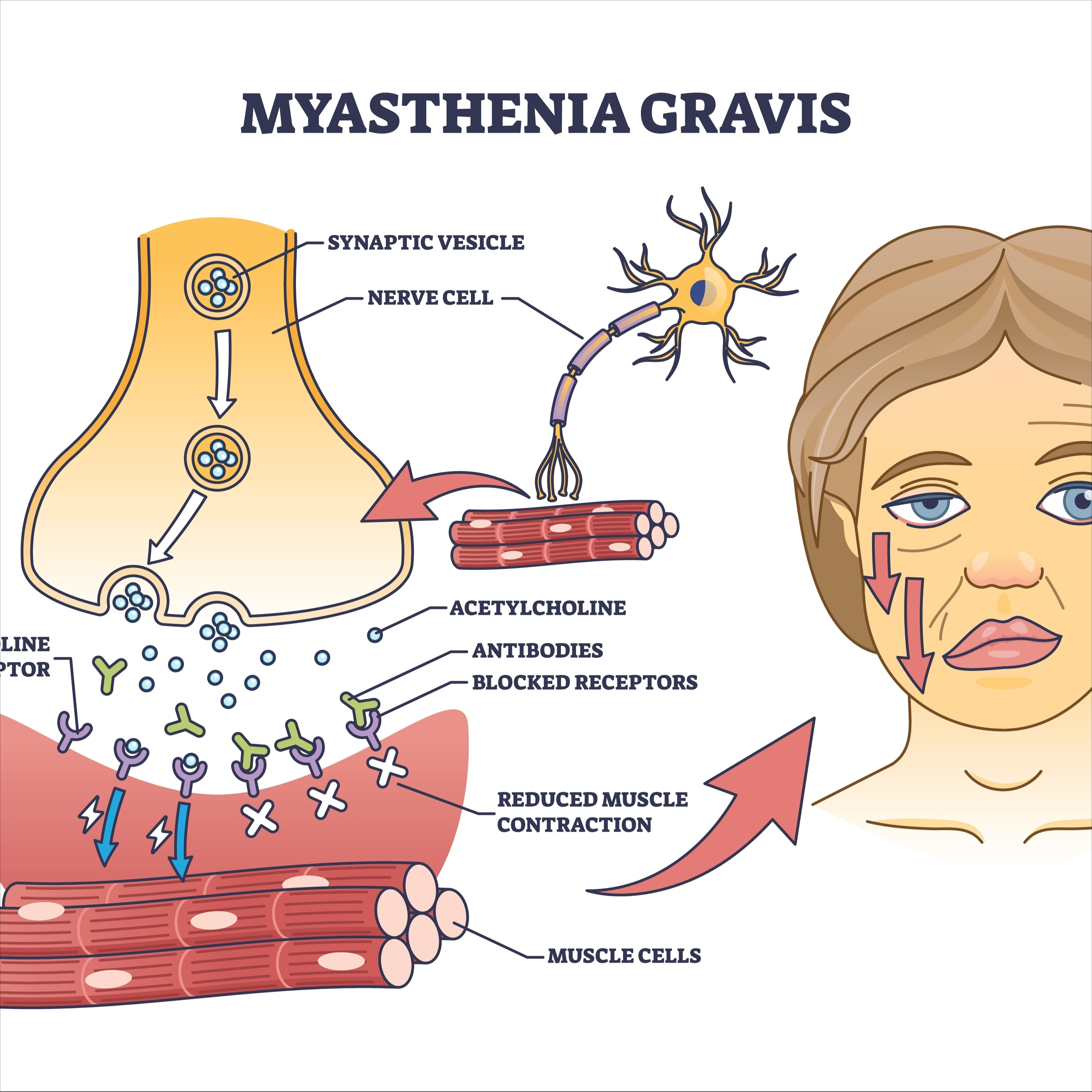
Myasthenia Gravis:
A Comprehensive Guide to Recognition and Treatment
Myasthenia Gravis (MG) is a rare but fascinating neurological disorder characterised by weakness and rapid fatigue of skeletal muscles.
This muscle weakness occurs because the communication between nerves and muscles is disrupted. But what exactly does this mean for those affected and what can be done about it?
In this comprehensive guide, we take you on a journey through the world of myasthenia gravis - from recognising and treating it to everyday tips that can make living with the condition easier.
What is myasthenia gravis?
Let's start with the basics. Myasthenia Gravis is an autoimmune disease. This means that the immune system, which normally protects the body from bacteria, viruses and other harmful invaders, mistakenly attacks healthy body cells - in this case the receptors on the muscles that are responsible for receiving nerve signals.
This leads to a weakening of the muscles responsible for basic movements such as swallowing, speaking, walking and lifting objects.
Causes and risk factors
The exact cause of myasthenia gravis is not fully understood, but researchers believe that genetic and environmental factors may play a role. Some studies suggest that certain genes increase the likelihood of developing MG. In addition, infections, stress and even some medications can increase the risk or worsen the symptoms of MG.
Symptoms of Myasthenia Gravis
The symptoms of MG can vary greatly from person to person and range from mild to severe forms. Typical signs include:
- Muscle weakness that worsens with activity and improves with rest
- Double vision (diplopia)
- Drooping eyelids (ptosis)
- Difficulty swallowing or speaking - Difficulty breathing
- Exhaustion and rapid fatigue
Severe cases can lead to a myasthenic crisis, a life-threatening situation characterised by extreme muscle weakness and requiring immediate medical treatment.
Diagnosis
Diagnosing myasthenia gravis can be challenging, as many of its symptoms can also occur in other conditions. Doctors use a combination of medical history, physical examination, blood tests that test for antibodies to the acetylcholine receptor or other relevant proteins, electromyography (EMG) and sometimes imaging techniques such as an MRI or CT scan.
Treatment options
The good news is that there are effective treatments for MG. Treatment aims to alleviate symptoms and improve quality of life.
Common treatment strategies include:
- Medication: Cholinesterase inhibitors, such as pyridostigmine, improve communication between nerves and muscles. Immunosuppressants can suppress the immune system and reduce the production of antibodies that attack the muscle receptors.
- Thymectomy: Surgical removal of the thymus gland, which can lead to a significant improvement in symptoms in some patients.
- Plasmapheresis and intravenous immunoglobulins (IVIG): Both are treatments aimed at removing the harmful antibodies from the blood or modifying the immune system.
living with myasthenia gravis
in addition to medical treatment, there are everyday strategies that can help you live with MG:
- Energy balance: learn to manage your energy by planning activities and taking adequate rest breaks.
- Nutrition: A balanced diet can help provide energy and support the immune system. Some people with MG find it helpful to eat smaller, more frequent meals to minimise swallowing difficulties.
- Exercise: Light to moderate exercise can help maintain muscle strength. It is important to discuss this with your doctor to create a plan that is right for you.
- Support: Talking to other sufferers through support groups or online forums can be very emotionally relieving and provide practical tips for dealing with the condition.
Future prospects
Research into myasthenia gravis is constantly progressing and new treatment options are being developed.
Gene therapy and personalised medicine are just some of the promising approaches that could revolutionise the management of MG in the future.
Conclusion
Myasthenia Gravis is undoubtedly a challenging condition, but with the right diagnosis, treatment and support, many sufferers can lead full and active lives.
If you or someone you know is showing symptoms of MG, don't hesitate to seek medical help.
Early intervention can make a big difference.
We hope this comprehensive guide has given you a deeper insight into the world of Myasthenia Gravis and has been helpful to you.
Stay informed, stay supportive, and above all, never lose hope.
Become a member now
As a member, you will receive further information and frequencies on this topic! Log in here!
